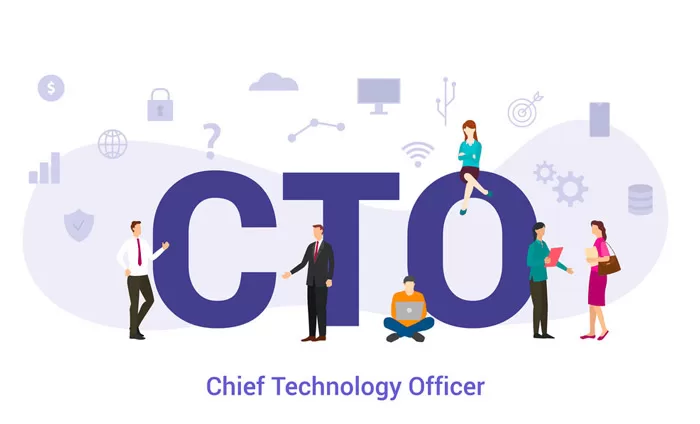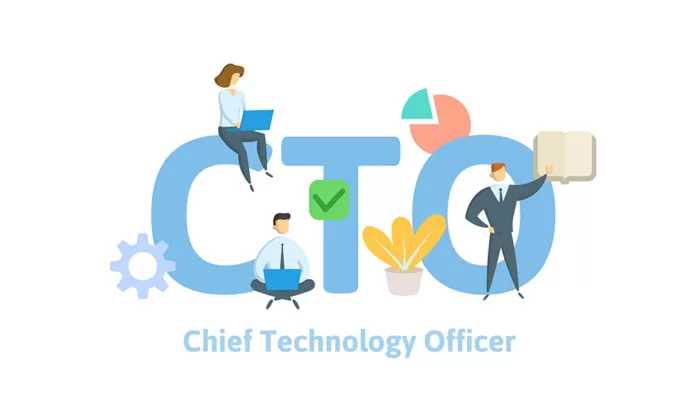In the ever-evolving landscape of technology, the role of a Chief Technology Officer (CTO) stands as a pinnacle of achievement for developers who aspire to shape the technological trajectory of a company. This article aims to provide an extensive roadmap for developers seeking to transition into the role of a CTO. We will delve into the intricacies of the CTO job description, explore the multifaceted responsibilities and role of a CTO, and outline the key requirements for individuals aspiring to become technology leaders.
clslearn offers you the best courses in the course of Risk Management Workshop
CTO (Chief Technology Officer) Job Description:

A Chief Technology Officer (CTO) is a senior executive responsible for steering the technological aspects of a company. The CTO job description encompasses a spectrum of responsibilities, highlighting their pivotal role in shaping the technological landscape of an organization.
- Technology Strategy:
At the core of the CTO’s role is the formulation and execution of a comprehensive technology strategy. This strategy is intricately woven into the fabric of the company’s overarching goals and objectives.
- Innovation Leadership:
The CTO serves as the vanguard of innovation within the organization. This involves identifying emerging technologies and trends, evaluating their potential impact, and seamlessly integrating them into the company’s operations.
- Team Leadership:
Building and leading a high-performing technology team is a cornerstone of the CTO’s responsibilities. Fostering a culture of collaboration, innovation, and continuous improvement is essential for driving success.
- Infrastructure Management:
Overseeing the company’s IT infrastructure is a critical aspect of the role. This involves ensuring scalability, security, and efficiency in the utilization of technological resources.
- Product Development:
The CTO collaborates with other departments to align technology initiatives with business goals. This collaboration is particularly evident in the development of new products or services.
- Risk Management:
Assessing and mitigating technological risks, including cybersecurity threats and potential data breaches, falls within the purview of the CTO’s responsibilities.
get to know: COST PERFORMANCE INDEX (CPI) FOR PMP
How to Become a CTO of a Company?
Transitioning from a developer to a Chief Technology Officer is a journey that requires strategic planning and continuous skill development. Here’s a step-by-step guide for developers aspiring to become CTOs:
- Mastery of Technical Skills:
Begin by mastering Full Stack Development and acquiring proficiency in both front-end and back-end technologies. This foundational knowledge is crucial for the comprehensive understanding required at the CTO level.
- Leadership Development:
Cultivate leadership skills by taking on progressively responsible roles within development teams. Showcase your ability to guide and inspire others while effectively managing projects.
- Continuous Learning:
Stay abreast of emerging technologies, industry trends, and best practices. Demonstrating a commitment to continuous learning is vital for any aspiring CTO.
- Advanced Education:
Consider pursuing advanced degrees or certifications in technology management, business administration, or a related field. This educational background can enhance your qualifications and provide a broader perspective.
- Industry Experience:
Gain extensive industry experience by working in various technology roles. Exposure to different facets of technology and business operations is invaluable for aspiring CTOs.
- Networking:
Actively engage with industry professionals, attend conferences, and participate in networking events. Building a robust professional network can provide valuable insights and opportunities.
- Strategic Decision-Making:
Showcase your ability to make strategic decisions by taking on leadership roles in technology projects. Highlight instances where your decisions positively impacted project outcomes.
- Business Acumen:
Develop a solid understanding of business operations, finances, and market dynamics. This knowledge is critical for aligning technology initiatives with overall business objectives.
- Communication Skills:
Hone your communication skills, both technical and non-technical. As a CTO, you’ll need to convey complex technological concepts to various stakeholders in a clear and understandable manner.
get to know: PMP VS SIX SIGMA WHICH CERTIFICATION WILL GIVE YOU A COMPETITIVE EDGE?
Responsibilities and Role of a CTO:

The role of a Chief Technology Officer is multifaceted, requiring a unique blend of technical expertise, leadership skills, and strategic vision. Key responsibilities include:
- Setting Technology Strategy:
The CTO is tasked with defining and executing a technology strategy that aligns with the company’s overall goals and vision.
- Team Building and Leadership:
Building and leading a technology team involves fostering a collaborative and innovative work environment. The CTO plays a crucial role in recruiting, leading, and inspiring a talented team.
- Innovation and Research:
Staying abreast of emerging technologies and conducting research to identify opportunities for innovation within the company is an integral part of the CTO’s role.
- Risk Management:
The CTO evaluates and mitigates technological risks, with a particular focus on cybersecurity and data protection.
- Collaboration with Other Departments:
Collaboration with other departments is essential to ensure that technology initiatives support and enhance overall business objectives.
Chief Technology Officer Requirements:
To become a CTO, certain requirements must be met. While these may vary, the following are generally expected:
- Educational Background:
A bachelor’s or master’s degree in computer science, information technology, or a related field is often required. Advanced degrees or certifications can provide a competitive edge.
- Proven Leadership Experience:
Demonstrated experience in leadership roles, showcasing the ability to lead and inspire teams effectively.
- Extensive Technical Knowledge:
In-depth knowledge of technology trends, industry best practices, and a proven track record of staying ahead in a rapidly evolving tech landscape.
- Strategic Vision:
The ability to develop and execute a strategic vision for technology that aligns with the overall goals of the company.
- Business Acumen:
A solid understanding of business operations, financial principles, and market dynamics is crucial for making informed decisions.
- Communication Skills:
Effective communication skills, both technical and non-technical, are essential for conveying complex concepts to various stakeholders.
- Problem-Solving Abilities:
Strong problem-solving skills are necessary to address technological challenges and devise innovative solutions.
Conclusion:
Becoming a Chief Technology Officer is a transformative journey that demands a combination of technical proficiency, leadership acumen, and strategic vision. The role of a CTO is dynamic, requiring individuals to navigate the complex intersection of technology and business. By following the outlined guide and continuously honing your skills, you can position yourself to become a CTO and contribute significantly to the technological advancements of your organization. Remember, the path from a developer to a CTO is marked by a commitment to learning, adaptability, and a passion for leveraging technology to drive business success. As you embark on this transformative journey, embrace the challenges, stay curious, and envision the positive impact you can make as a Chief Technology Officer.
























